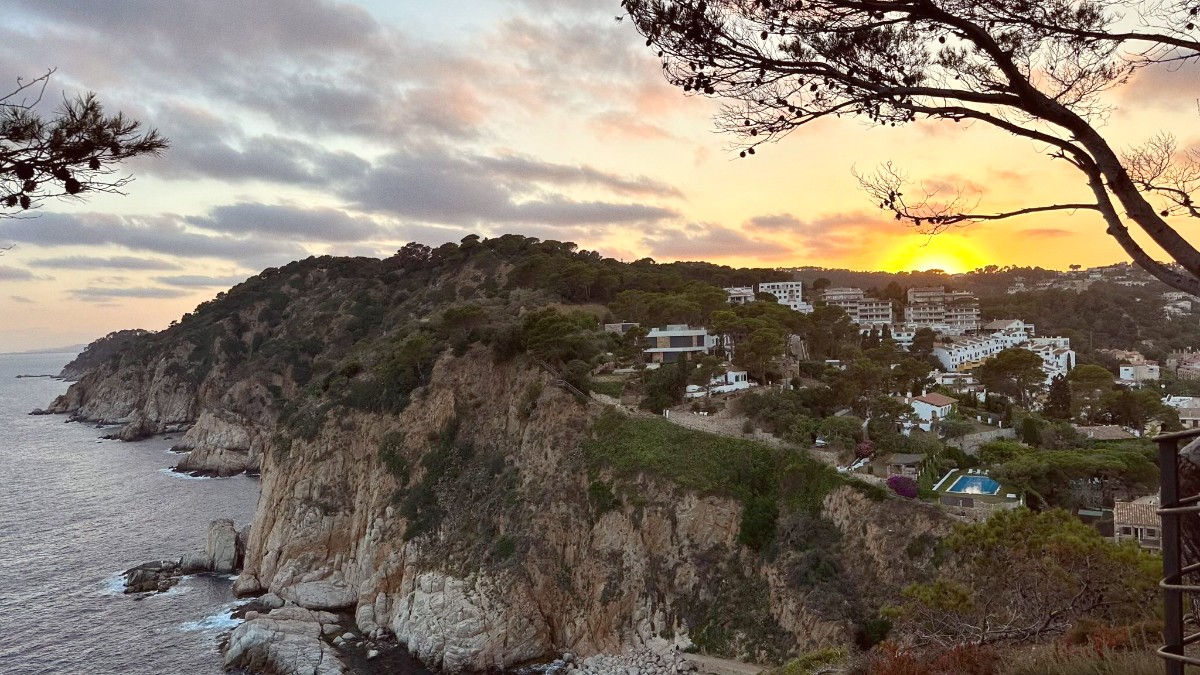
Spain
The region's name, "Wild Coast," hints at its untamed character. You find dramatic cliffs, secret coves accessible only by boat or foot, and landscapes that have inspired artists for centuries. Beyond the coastline, medieval villages wait with cobblestone streets and stories from long ago. This guide delivers practical information and local insights for your Costa Brava trip.
Prepare to discover a part of Spain that balances lively resort towns with quiet, picturesque havens.
The region’s accessibility, combined with its diverse offerings, suits various travel styles. From solo adventurers to families, everyone finds enjoyment here.
It is a region of contrasts, where the Pyrenees foothills meet the Mediterranean. This meeting creates a landscape unlike any other in Spain. The coastline starts in Blanes, south of the Tordera River, and extends northwards to Portbou, nestled against the French border. This northern stretch features the Cap de Creus peninsula, a rugged, wild natural park.
You find steep, rocky cliffs formed by ancient movements, interspersed with small, often pebbly, coves. These coves, or "calas," characterize the Costa Brava, offering secluded spots for swimming and sunbathing away from larger crowds. The characteristic pine trees grow right to the water's edge, offering shade and a fragrant aroma. This blend of rock, forest, and sea creates a distinctive visual appeal.
Around towns like Lloret de Mar and Platja d'Aro, the coastline becomes softer, with wider, sandy beaches.
From the immediate coast, the landscape shifts to rolling hills, agricultural lands, and dense forests.
The Empordà area contains medieval villages, vineyards, and olive groves.
The Ter River flows through this region, reaching the sea near L'Estartit. It creates wetlands.
Northern/central Costa Brava for dramatic scenery, southern for sandy beaches. Travel between areas is simple.
The region has a Mediterranean climate, with warm, dry summers and mild winters. This climate makes outdoor activities enjoyable for much of the year.
The diverse terrain supports a variety of ecosystems, from marine reserves in the Medes Islands to the unique flora of Cap de Creus.
The variations in coastline mean you choose the type of beach and landscape that suits your preference.
This blend of rock, forest, and sea creates a distinctive visual appeal.
The Costa Brava is a long and rich history, visible in its landscapes and towns. Before the Greeks and Romans arrived, Iberian settlements thrived here. These early inhabitants built fortified villages on hilltops, their remnants still visible today. The ancient city of Empúries, near L'Escala, serves as a powerful reminder of this early history.
Empúries was an important trading port from the 6th century BCE. Here, Greek colonists established a presence, followed later by the Romans. You explore the foundations of their cities, envisioning a time when goods and ideas flowed between the Mediterranean and the Iberian Peninsula. This site offers a direct connection to the roots of classical civilization in Spain.
Fortified towns, built to protect against pirates and invaders, dot the landscape. Tossa de Mar’s Vila Vella (Old Town) provides an example.
Inland, villages like Pals and Peratallada offer perfectly preserved medieval architecture, like living museums.
Salvador Dalí found deep inspiration in the northern Costa Brava. His connection shaped the region's artistic identity.
After World War II, the Costa Brava began its transformation into a popular tourist destination. Fishing and agricultural economies gave way to a focus on welcoming visitors.
The Costa Brava is a highly popular travel destination, attracting over 5 million visitors annually. Its widespread appeal stems from a combination of natural beauty, cultural richness, and diverse activities. This region presents a wide range of experiences, from quiet beach relaxation to active outdoor adventures and deep dives into history and art.
One of the main draws is its natural environment. The Cap de Creus Natural Park, with its unique geological formations and rugged coastline, offers striking beauty and a sense of wildness. The Medes Islands Marine Reserve, off the coast of L'Estartit, makes a prime spot for divers and snorkelers. These natural areas provide opportunities for hiking, water sports, and simply enjoying the unspoiled scenery.
The Dalí Theatre-Museum in Figueres makes a must-visit for art lovers. The ancient Greek and Roman ruins of Empúries offer a journey back in time.
You hike sections of the Camí de Ronda. Water sports are popular, including swimming, kayaking, paddleboarding, and sailing. The region's strong culinary scene delights.
Girona-Costa Brava Airport (GRO) serves as a main gateway. For wider international connections, Barcelona-El Prat Airport (BCN) is a major hub.
Both airports provide direct transport links to the Costa Brava via bus, train, or car rental. This accessibility makes planning your arrival and departure simple.